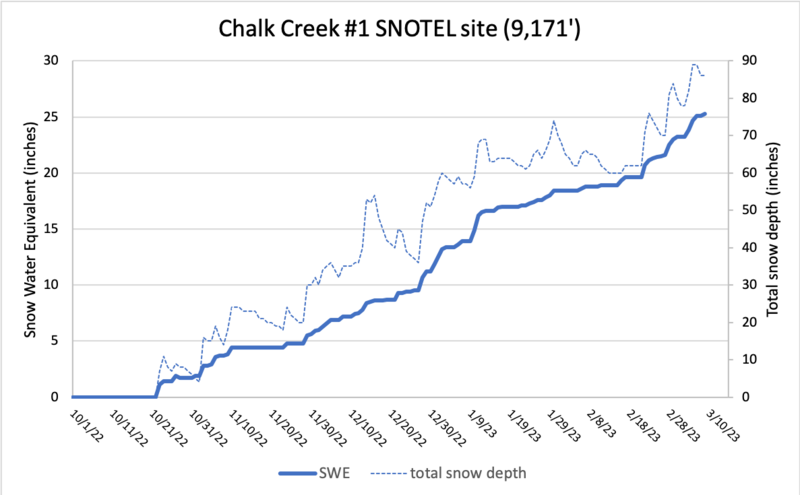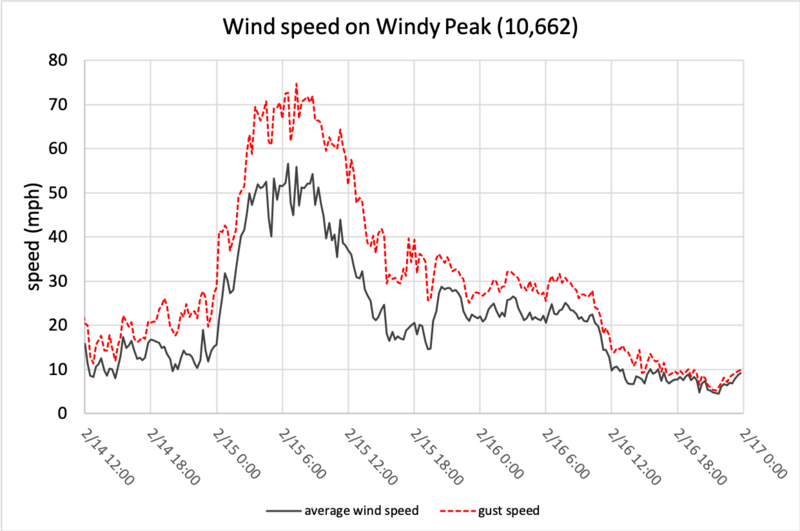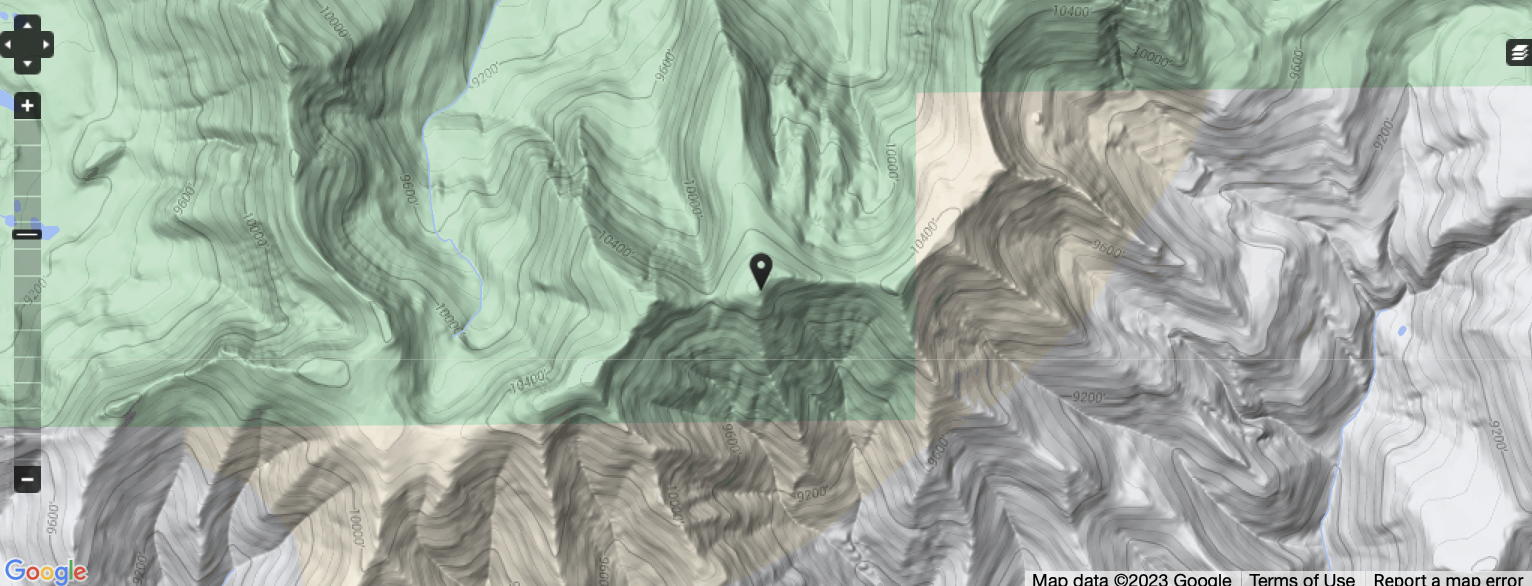
On Thursday afternoon, March 9, a group of guided skiers triggered an avalanche in the Upper Weber Canyon, Utah. Upper Weber Canyon is located 45 minutes northeast of Salt Lake City.
The Summit County Dispatch received a call at 3:30 p.m. and multiple agencies responded.
Two skiers were caught, carried, and buried and a transceiver search ensued. Both individuals were located and one skier was successfully excavated and flown to a nearby hospital. The other skier was buried deeper and wasn’t breathing when he was uncovered. Both air ambulance and guide personnel initiated CPR, but he passed away at the scene.
The avalanche occurred at a slope angle of 37° and was about 400 feet wide and 4 feet deep.Most avalanches happen at an angle of between 34° – 45°, making the terrain prime avalanche terrain.
Today, the full report has been shared by the Utah Avalanche Center and is attached below. The report has been shared in order to learn from accidents like this and offer comments to help others avoid future accidents.
Accident: Upper Weber Canyon
Observer Name
UAC Staff
Observation Date
Thursday, March 9, 2023
Avalanche Date
Thursday, March 9, 2023
Region
Uintas » Upper Weber Canyon
Location Name or Route
Upper Weber Canyon
Elevation
10,400′
Aspect
Southeast
Slope Angle
37°
Trigger
Skier
Trigger: additional info
Unintentionally Triggereds
Avalanche Type
Hard Slab
Avalanche Problem
Persistent Weak Layer
Weak Layer
Facets
Depth
4′
Width
400′
Vertical
1,250′
Carried
2
Caught
2
Buried – Fully
2
Injured
1
Killed
1
Accident and Rescue Summary
Two guides, eleven clients, and two snowcat operators, were out for a day of guided skiing in the Western Uinta Mountains of Utah. The group spent the day skiing several drainages in Upper Weber Canyon, completing eight runs. For the ninth run, the group went to the top of point 10,597 (just over three miles to the west of Windy Peak) at around 15:10.
Guide 1 skied the slope in one pitch and stopped above a group of trees, outside the avalanche path. Skiers 1 and 2 descended one at a time to guide 1. Skier 3 began skiing next but fell part way down the slope. Skier 3 was still on the slope as Skier 4 began descending. At approximately 15:21, the avalanche released while Skiers 3 and 4 were both on the slope. Both skiers 3 and 4 were caught and carried downhill in the avalanche and fully buried.
At 15:21 Guide 1 radioed all personnel that a large avalanche had occurred. As Guide 1 moved down the debris field, he radioed for additional help. Other guides, snowcats, and PCPC personnel mobilized to the accident site to assist. At 15:27, PCPC guides confirmed there were two missing guests. During this time, PCPC Dispatch requested an air ambulance. Two air ambulances responded, one from AirMed and one from Life Flight.
Guide 1 moved onto the debris field in the gully of the runout zone. While descending the avalanche debris field, Guide 1 momentarily detected a ghost transceiver signal, but his transceiver was in close proximity to his radio. Radios, cell phones, and other electronic devices have been know to cause transceiver interference if they are too close. Guide 1 moved his transceiver away from his radio and continued searching down the debris field. Once Guide 1 reached the toe of the debris, he switched his skis from downhill to uphill mode and began ascending the debris to continue searching.
While Guide 1 was transitioning his skis to climb uphill, Guide 2 had reached the debris field and received a transceiver signal. Guide 2 followed the signal to a location where his transceiver read 1.6 meters. On their second probe, a positive strike was made at a depth of 130 cm, and Guide 2 began shoveling with help from Skier 5 and one of the snowcat operators who had descended on skis. They proceeded to dig and uncover the face of the buried skier who was breathing, alert and oriented. Guide 2 and Skier 5 with help from other guides continued to excavate the remaining snow from around the buried skier. The skier was transferred to an air ambulance that transported him to a local hospital.
As more PCPC personnel arrived, they entered the area from both the top of the slope and a snowcat road about ⅔ of the way down the debris field. They detected a signal from the other buried skier and began probing at a location where a transceiver read 2 meters. On their second probe, they got a positive strike and began digging with assistance from Guide 1. They initially uncovered the skier’s ski boot and realized that the skier was upside-down with their head buried close to 2 meters deep. When the skier’s head was uncovered, they were not breathing and had no pulse. Ventilations and other medical care were provided while the remaing snow was removed around the skier. Once the skier was fully extricated from the avalanche debris, guides continued to administer medical care with support from an additional air ambulance crew. The skier was pronounced dead 1 hour and 20 minutes after the avalanche.
At approximately 1650, UAC staff joined a PCPC forecaster and examined the crown face of the avalanche prior to a storm that was expected to arrive that evening. At approximately 19:00 all personnel gathered at the bottom of the accident site and made their way back to base. At 19:30 all personnel were down and clear.
Avalanche Summary
This avalanche was a hard slab avalanche that failed 2-6’ deep on a layer of rounding facets below a crust. Based on observations of layers in the crown face, it is suspected that this weak layer formed in the first few days of February (Feb. 1st-4th). Until this avalanche, there had been no notable avalanches failing on weak layers from early February. This slide broke 400’ wide, and ran nearly 1400’ vertical. This avalanche produced debris that averaged two-meters deep, and nearly three meters at its deepest. The toe of the avalanche debris ended at 8950’, and had a runout angle of 20 degrees at the toe. This avalanche is classified as HS-AS-R3-D3.

Terrain Summary
The slope where the accident occurred is an East-Southeast facing slope with a start zone elevation of 10,380’. The start zone has a max slope angle of 45°, minimum of 24°, and an average angle of 37°. The upper part of the slope is convex. Overall the terrain faces different directions and leads into the gully below.
Weather Conditions and History
*Wind data come from Windy Peak (10,662’) approximately 3.27 miles east of the avalanche. Snow depths and water content are taken from the Chalk Creek #1 SNOTEL site (9,169’)approximately 2 miles northeast of the avalanche. Additional snow and water totals are available from both Red Creek and Trial Lake SNOTEL stations.


In December and January, there had been avalanches failing on a persistent weak layer of faceted snow that formed in November. The last recorded avalanche on this November layer occurred on January 13, and the last Uinta Avalanche Forecast to include this persistent weak layer avalanche problem was January 19.
Several short periods of dry weather occurred in early to mid-February that created several layers of near surface facets on top of the snowpack. Most of these layers were destroyed by a region-wide east wind event on February 15 (see chart of wind speeds from Windy Peak). On slopes not scoured by these winds, these layers were buried by subsequent snowfall (4 inches of SWE through the end of February). However, these layers never produced notable avalanches in the western Uinta Mountains, and snowpack tests generally showed a lack of propagation.
A storm on March 5 and 6 delivered 1.9 inches of snow water equivalent when the avalanche danger above treeline rose to High with forecasted avalanche problems of new and wind drifted snow. Between March 5 and 9, the avalanche danger steadily dropped.
The Uinta Avalanche Forecast on March 9 rated the avalanche danger as Moderate near and above treeline on northwest through east through southeast aspects with a Low danger on all other aspects and elevations. The sole avalanche problem was wind drifted snow. The forecast listed one shallow avalanche from the day before on a southeast aspect at 9,400 ft that appeared to break just under the newest snow.
Comments
The UAC would like to thank Park City Powder Cats (PCPC) for sharing information about the timeline of the accident and allowing UAC staff access to the avalanche after the incident.
We aim to learn from accidents like this and offer comments to help others avoid future accidents. There were two factors that added challenges to this rescue:
One factor was that the skier who did not survive was buried deeply. Shoveling is the most demanding and time-consuming phase of a rescue which takes longer the deeper a person is buried.
The other factor was that there were two people buried. Rescue becomes more complex and more time consuming when there are multiple people buried by an avalanche.
Coordinates
